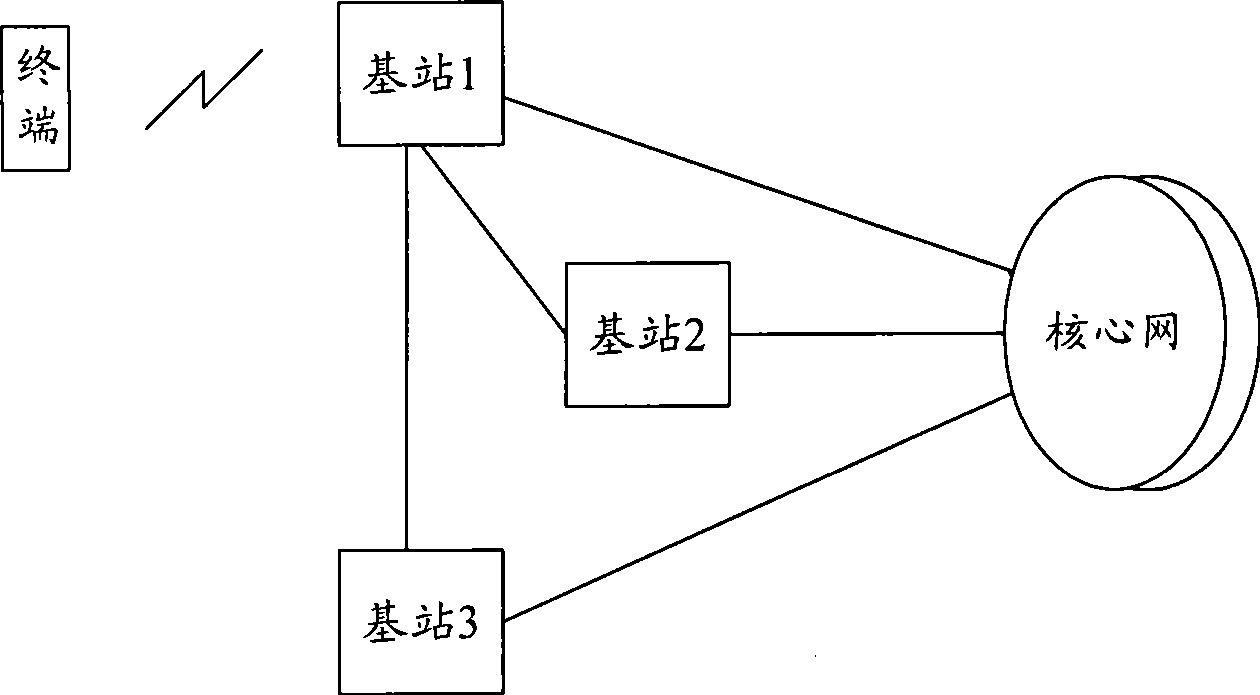Accidental access method for honeycomb wireless communication system
A communication system and random access technology, applied in the field of communication, can solve the problems of heavy signaling interaction burden, large processing delay, and low processing efficiency, and achieve the effects of reducing signaling burden, improving efficiency, and reducing complexity
- Summary
- Abstract
- Description
- Claims
- Application Information
AI Technical Summary
Problems solved by technology
Method used
Image
Examples
no. 1 example
[0041] In this embodiment, a random access method of a cellular wireless communication system is provided, wherein layers 2 and 3 determine that the random access response has not been successfully received and decide to resend the random access preamble. Such as Figure 5 As shown, the method includes the following processing:
[0042] Step S502, layer 2 and layer 3 of the terminal (that is, the second layer and the third layer mentioned above) trigger the physical layer to send a random access preamble (random access preamble message);
[0043] Step S504, layer 2 and layer 3 determine whether a random access response (random access response message) is received within the receiving time window;
[0044] Step S506, if the layer 2 and the layer 3 judge that no random access response is received, trigger the physical layer to resend the random access preamble.
[0045] Afterwards, under the trigger of layer 2 and layer 3, the physical layer stops receiving the random access r...
example 1
[0047] The above process is described below with an example of interaction between the MAC layer and the physical layer.
[0048] First, the MAC layer protocol of the terminal triggers the physical layer to send a random access preamble; after the physical layer finishes sending the random access preamble, it starts to wait for the random access response;
[0049] The MAC layer does not receive any random access response message within the receiving time window, and decides to resend the random access preamble, thus triggering the physical layer to resend a random access preamble;
[0050] After receiving the new trigger message, the physical layer stops receiving the random access response immediately, and sends the random access preamble on the random access time slot required by the trigger message.
no. 2 example
[0052] In this embodiment, a random access method of a cellular wireless communication system is provided, wherein, layer 2 and layer 3 determine that the random access response has not been successfully received and decide to give up retransmitting the random access preamble, specifically, layer 2. Layer 3 may give up retransmitting the random access preamble because the number of times of retransmission reaches the predetermined maximum number. Such as Figure 6 As shown, the method includes the following processing:
[0053] Step S602, the layer 2 and layer 3 of the terminal trigger the physical layer to send the random access preamble;
[0054] Step S604, Layer 2 and Layer 3 determine whether a random access response is received within the receiving time window;
[0055] Step S606, if layer 2 and layer 3 determine that no random access response has been received, notify the physical layer to stop receiving the random access response.
[0056] Afterwards, after receiving...
PUM
 Login to View More
Login to View More Abstract
Description
Claims
Application Information
 Login to View More
Login to View More - R&D Engineer
- R&D Manager
- IP Professional
- Industry Leading Data Capabilities
- Powerful AI technology
- Patent DNA Extraction
Browse by: Latest US Patents, China's latest patents, Technical Efficacy Thesaurus, Application Domain, Technology Topic, Popular Technical Reports.
© 2024 PatSnap. All rights reserved.Legal|Privacy policy|Modern Slavery Act Transparency Statement|Sitemap|About US| Contact US: help@patsnap.com










